Office Hours
I have an NYU office-hour calendar and will be posting hours here throughout the semester. My NYU email is jeff.feddersen@nyu.edu
GA
The 2023 IMA Energy GA is Priyanka Makin! pm2478@nyu.edu. She has office hours too! Just for you!
Course Organization
This website is the central source for information about the class. NYU Brightspace will be used for attendance and assignment tracking.
Student Documentation
Links to student blogs will go here after you turn them in.
Important Dates
The Kinetic Project will be demonstrated in class in week 7 (Thursday March 7th).
The Measurement Project paper is due in week 12 (Thursday April 20th).
The Solar Project will be demonstrated in class in week 14 (Thursday May 4th).
Weekly assignments and readings are in the week-by-week syllabus below. Assignments made Tuesday of one week are due by the end of the following Monday, unless otherwise noted.
Assignments
Overall, the course is divided into two halves, with each half organized around a 7-week hands-on project. Readings and additional shorter (1- to 2-week) assignments related to the projects will be posted throughout the semester each week in the schedule below. The lecture periods of the course (Tuesdays) will present ideas and opportunities for discussion, and the lab days (Thursdays) will be opportunities to do hands-on work. Homework will be assigned on Tuesdays and due by 11:59 PM the following Monday. Projects are due when presented in class.
Kinetic Project
Turn motion into light.
Due week 7.
The first half of the semester focuses on kinetic energy. In this hands-on assignment, you will build a device to turn motion into electricity, store that electricity in a capacitor, and power an LED with the stored electricity. Basic parts to accomplish this will be provided in the course kit. More details on the kinetic project will be provided in a Kinetic Project Brief given in week 2.
Solar Project
Turn light into computation.
Due week 14.
The second half of the semester focuses on solar energy. In this hands-on assignment, you will use solar energy to power computation on a digital device. More detail on the solar project will be provided in a Solar Project Brief in week 8.
Measurement Report
Manage what you measure.
Due week 12.
Measuring energy gives you insight into the process you are measuring, requires you to keep units straight (power vs energy; watt-hours vs watts, etc) and is helpful in comparing various processes in energy terms.
In the spirit of the class, this assignment combines the personal/local with the communal/global. For a subject you are interested in, combine direct measurements that you can make with related contextual statistics you find through research. The final result will be a 2-page paper synthesizing your research and measurements. More details will be provided in the Measurement Project Brief in week 3.
Participation
The class meets twice a week. We will alternate between lectures and discussions on Tuesdays and Thursday lab sessions where we will do hands-on work building towards the projects.
Your engaged participation in class (both listening and speaking) is extremely important. The class works best if you actively work to get information out of me! A distant second best is if you passively receive information I present. And worst of all is not receiving the information at all by missing the class, arriving late, or not paying attention. (Tip – this is true of most classes.)
If you have any issues and can’t join class meetings, please let me know before the class so I can plan accordingly. Two or more unexcused absences is grounds for failure. Chronic lateness or early departure will also affect your grade.
Grading
For weekly assignments, students will receive a 0, 1, or 2 on quality of work (these are adapted from the IMA Physical Computing criteria):
- Quality of work
- 0 – Lack of effort/interest: Student did not submit assignment or submitted incomplete assignment
- 1 – Satisfactory/Good: Student submitted assignment and demonstrated a solid degree of effort, interest, and engagement in the subject.
- 2 – Great: Student demonstrated excellence in the assignment.
- 3 – A secret, rarely-used extra-credit category.
The kinetic, solar, and measurement projects will be graded with a multi-part rubric where each category will be assessed on the same 0-2 point scale. Details will be in the project briefs.
Overall weighting:
- 25% Weekly assignments, attendance, and overall participation
- 25% Kinetic Project
- 25% Measurement Project
- 25% Solar Project
Weekly Syllabus (IMA)
Week 1 – Introductions
Lecture, Tuesday, January 24
Introductions: Who am I, and who are you? Where did this class come from? Overview of the semester and assignments.
Presentation: The 2003 East Coast Blackout
Discussion: What’s the longest you’ve gone without electricity?
Reading: Review the syllabus carefully and understand what will be expected of you throughout the semester.
Homework (Due end-of day (EOD) next Monday):
- Set up a class blog for documenting projects and post the URL in Brightspace.
- Review the syllabus. Get a sense of what material is there and how to find it – see assignment in Brightspace.
- Complete the course intake form.
- Order the Smil text, which is available through the NYU Bookstore [but is backordered?!] or online.
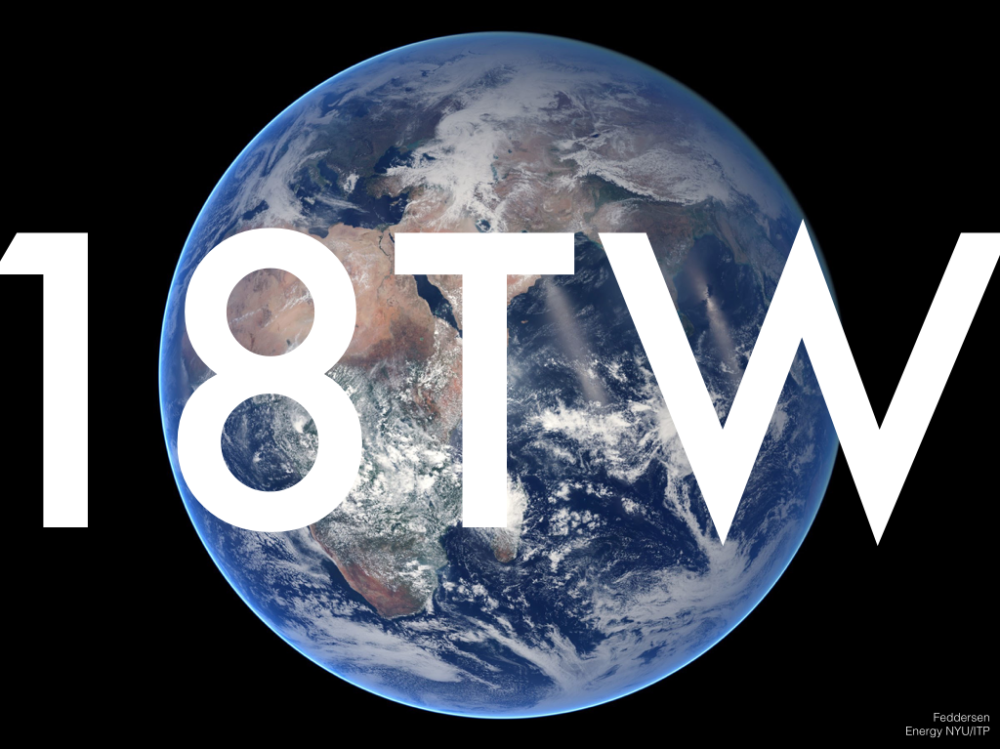
Lab, Thursday, January 26
Jump Lab
Materials needed: A way to measure or estimate height (ruler, tape measure, accurate AR app) and a timer (phone).
Post measurements to your blog.
Week 2 – Kinetic 1
Lecture, Tuesday, January 31
Topic: The energy of moving things. The history of energy since the Big Bang. Kinetic and potential energy formulas. The First and Second Law of Thermodynamics.
Presentation: Kinetic Energy, 5-Minute Energy.
Reading: Stuart McMillen’s illustrated essay about energy in terms of the human body. This idea traces back to Buckminster Fuller, and is the basis for former Energy Secretary Steven Chu’s concept of energy servants. Content note: this work uses the image of fictional ‘energy slaves’ as a central metaphor for this comparison.

Several additional written essays by McMillen discussing the work and the ideas behind it are great optional resources for additional material. Thanks go to Todd Whitney from Energy 2021 for finding this excellent resource.
Homework: Read the McMillen illustrated work. Post two questions to Brightspace (by EOD next Monday) for class discussion next week.
Lab, Thursday, February 2
Parts lab: I’ll hand out components to get you started on the Kinetic Project. We’ll also do an energy scavenger hunt and review how to use a multimeter.
Materials needed: DC Motor (from your Physical Computing kit), multimeter.
Week 3 – Kinetic 2
Lecture, Tuesday, February 7
Topic: More on kinetic energy. Heat, entropy. Examples of big kinetic energy projects.
Discussion: McMillen reading.
Presentation: Power orders of Magnitude (part 1)
Reading: Smil – Chapter 1.
Homework:
1) Post two questions from the Smil reading to Brightspace for discussion next week.
2) Find an energy bill (yours, a family member’s or friend’s). Post a summary of all energy-related values (typically electricity and natural gas) as well as the time period for the bill. Alternately, bring the bill in to show in class, or post a copy with any sensitive information such as address and account number removed. Due EOD next Monday in Brightspace.
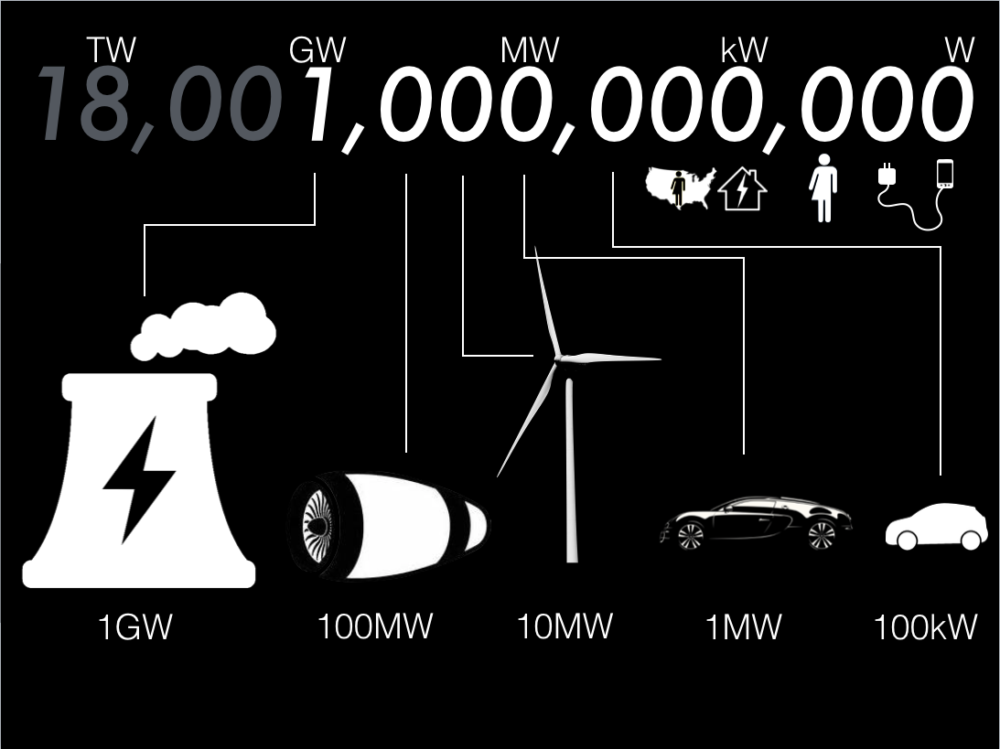
Lab, Thursday, February 9
Generator Lab. We will begin to use our DC motors and stepper motors as generators. We’ll measure the SSC and OCV of the DC motor and look at the stepper signal on an oscilloscope. Post measured values to your blog.
Materials needed: Kinetic kit parts, multimeter.
Look ahead: Begin to think about how to attach things to your generator and how you’ll capture motion.
Week 4 – Storage 1
Lecture, Tuesday, February 14
Topic: Energy storage. General energy storage concepts and examples. Specific information on capacitors.
Presentation: Energy Storage, Capacitors, Power Orders of Magnitude (part 2).
Discussion: Smil Chapter 1
Activity: Drawing energy curves
Reading: Smil Chapter 2
Homework:
1) Post two questions from Smil Chapter 2 to Brightspace.
2) Use Google Patents or similar to find one example of a combination shoe-electrical generator. Post to Brightspace.
3) Post your area of focus for the Measurement Report to Brightspace. Due EOD next Monday.
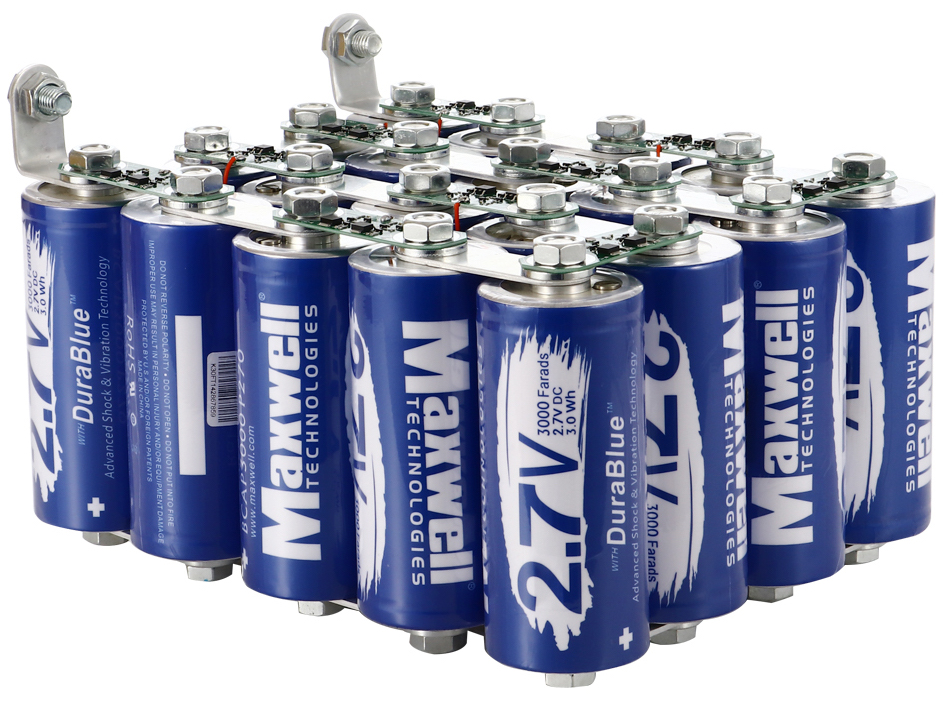
Lab, Thursday, February 16
Rectifier Lab. We’ll work with “rectifiers” to condition the output of our DC and stepper motors. Intro to capacitors.
Materials needed: Kinetic kit parts, multimeter.
Take away: Incorporate the rectification circuit into your kinetic project.
Week 5 – Review
Lecture, Tuesday, February 21
Topic: This is a week to review and catch up. AMA energy!
Presentation: Power Orders of Magnitude (part 3)
Discussion: Smil Chapter 2
Reading: Smil Chapter 3
Homework: Post two questions from Smil chapter 3 to Brightspace for discussion next week.
Lab, Thursday, February 23
Mechanism workshop lab: Workshop ways to put motion into your generator. Continue capacitor, introduce LEDs.
Week 6 – Kinetic 3
Lecture, Tuesday, February 28
Topic: Big Kinetic. Wind turbines, hydro, the back half of thermal power plants.
Presentation: Big Kinetic.
Discussion: Smil chapter 3.
Homework: Work on Kinetic Projects. Document your project with photos, schematics, and text. Bonus: video reading a passage of the Smil text using only the light you generate. Post to your blog and submit the link on Brightspace before the presentation of the project next week.
Lab, Thursday, March 2
LED Lab. Finish adding LEDs to your kinetic project. Measure current through LEDs. Finalize kinetic designs.
Week 7 – Midterms
Lecture, Tuesday, March 7
Possible midterm quiz on kinetic energy and Smil reading. Look ahead to second half of semester.
Lab, Thursday, March 9
Kinetic Project Presentations!
BREAK
Week 8 – Solar 1
Lecture, Tuesday, March 21
Topic: Solar vs. kinetic+induction energy; the growth of solar; solar basics.
Presentation: Solar 1 (first half):
Discussion: Smil so far
Reading: Morton, Hyperobjects. (For context, see also this New Yorker Article on Morton)
Homework:
- Identify four sources you will use for your Measurement Project report.
- Test your solar panel for OCV and SCC (related to this week’s lab).
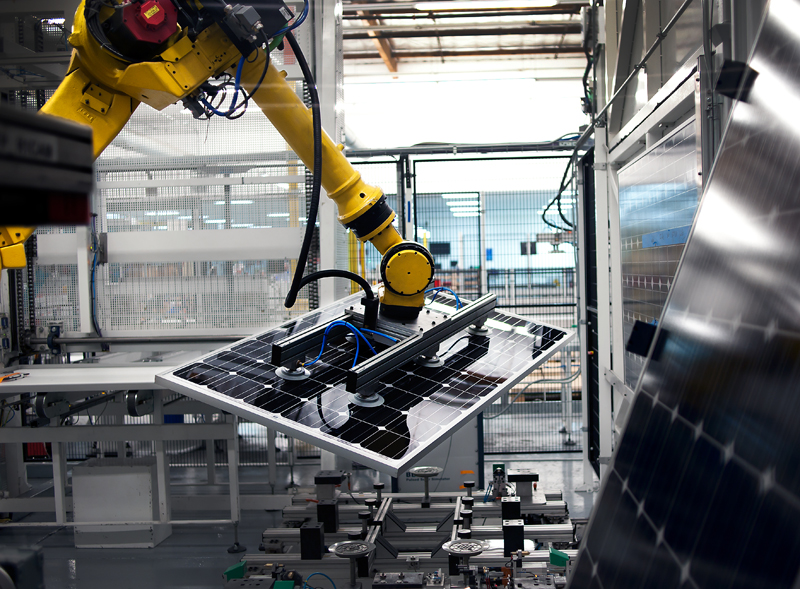
Lab, Thursday, March 23
Solar Intro: Meet your kit components and the ITP Energy Cart supplies. Test solar panels under Cart light.
Week 9 – Solar 2
Lecture, Tuesday, March 28
Topic: Solar continued – different types of PV material; analyzing PV performance and reading data sheets; design strategies for working with solar at different power regimes. Some solar art.
Presentation: Solar 1 continued (slides posted last week)
Discussion: Hyperobjects
Reading: Smil Chapter 4
Homework:
- Refer to this list of energy terms. Identify three that are related to your measurement project and define them.
- Determine the voltage, current, and power required to operate a microcontroller.
Lab, Thursday, March 30
Microcontroller measurements: We’ll practice using multimeters and power monitors to directly measure power.
Week 10 – Storage 2
Lecture, Tuesday, April 4
Topic: Introduction to battery energy storage. General battery parameters. Battery Safety. C-Rate and Amp-hours.
Presentation: Batteries (first half).
Discussion: Smil Chapter 4
Reading: Finish Smil
Homework:
- Outline your Measurement Project report.
- Identify what computation you will power with light.
Lab, Thursday, April 6
DC-DC Converters: Your kit includes one DC-DC boost converter that can convert a lipo battery input to 5V. We’ll set it up and test it.
Here are some notes on setting up and testing DC-DC converters:
Week 11 – Storage 3
Lecture, Tuesday, April 11
Topic: Batteries continued. Battery sizes compared.
Presentation: Batterie Energy Storage (slides continued from last week)
Discussion: Measurement Project progress.
Reading: Smil chapters 5 and 6
Homework:
- Draft your Measurement Project report
- Identify and order a battery for your solar project if you determine it is necessary.
Lab, Thursday, April 13
Solar computation workshop: Using your solar parts and microcontrollers, make a first attempt to power your project with light. Do you understand why it does or doesn’t work?
Week 12 – Solar 3
Lecture, Tuesday, April 18
Topic: Solar balance of System. Concentrating and tracking solar. Inverters.
Presentation: Solar 2.
Discussion: Solar review. Smil wrap-up.
Reading: Arduino Guide to Low-Power Design.
Homework:
- Finish measurement Project Reports.
- Revise light-powered computation projects.
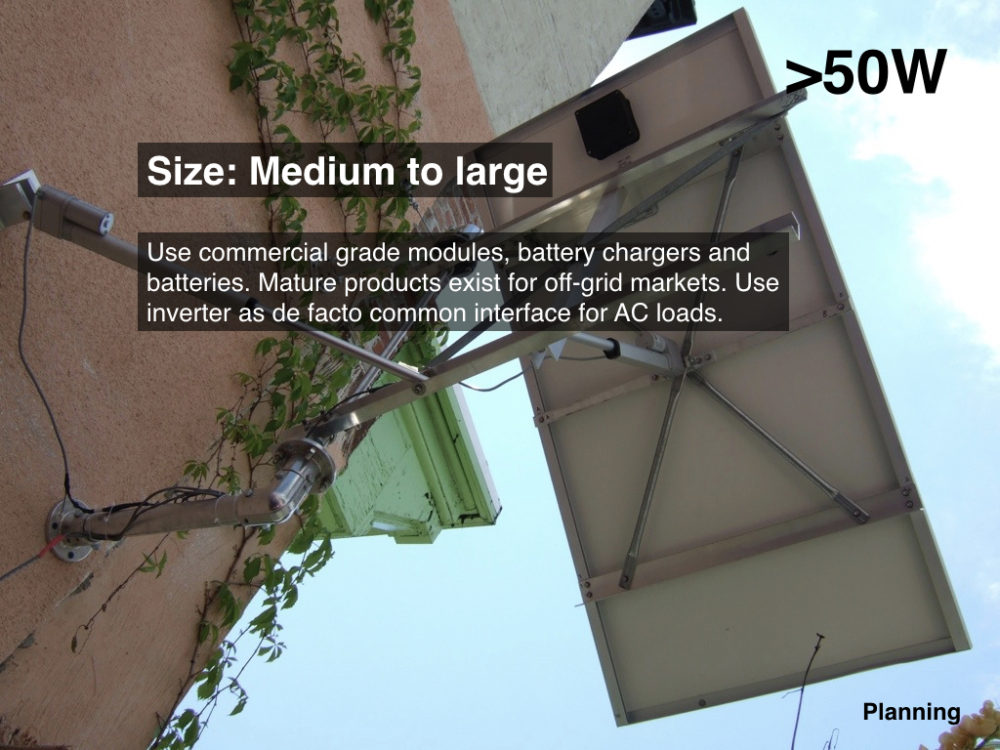
Lab, Thursday, April 20
Solar computation workshop II: Revise your solar project. Incorporate sleep or other power-saving techniques.
Week 13 – Special Topics
Lecture, Tuesday, April 25
Topic:
Presentation:
Discussion:
Homework: